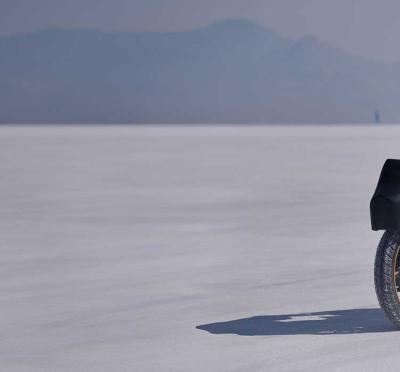For Kyle McGann, figuring out the details of a project is fun. During one of his deployments to Afghanistan, he built a climbing wall in his room.
“I found the two best pieces of plywood then scrounged some two by fours,” McGann said. “My brackets were other pieces of plywood that I just cut out to put everything together.”
Now a graduate student in mechanical and manufacturing engineering at Oregon State University, McGann is working with associate professor of mechanical engineering John Parmigiani in the Prototype Development Lab, where he focuses his love of creatively building things on product development. For his project-based master’s degree, McGann is hard at work shepherding a design idea from conception to prototype to something that could be bought at a store.
“I was hired to work on a product and take it from the idea stage through the design, testing, and development phases all the way to a manufacturing plan,” he said.
In 2016, after ten years and four deployments, McGann started thinking about a future outside of the military. Interested in pursuing something for the long term, McGann decided to return to school to get his bachelor’s degree in mechanical engineering at Oregon State. As he was nearing graduation without a plan, McGann received an email from Parmigiani—who taught one of his classes—seeking to fill an open position in his lab.
“I had no intention of doing a master’s degree,” McGann said. “But developing products and prototypes is what I want to do so I couldn’t pass up the opportunity.”
McGann added a minor in ergonomics to work towards this goal, studying how people interact with a product or process.
“Oftentimes people encounter products that don’t really work well or there’s something wrong with the way people engage with them,” he said. “I am really drawn to the idea of designing products for people that they're going to enjoy.”
McGann is currently involved in a project with the Prototype Development Lab to fine-tune a tree-climbing robot. The LimbBob began as a senior capstone project, originally conceptualized by a farmer from Alsea, that can autonomously climb trees and cut growing limbs with a saw to prevent knots in harvestable timber.
“The idea is you send it up when the tree is five years old and then at regular intervals after that,” he said. “When it's ready to harvest at 40 years all the limbs from the bottom two thirds of the tree will have been removed, so the knots are really small or not there at all. And this creates better wood.”
McGann will continue working on the LimbBob through the fall, with plans to add the saw function next spring. It’s right in line with his interests in product development for the outdoor and sporting goods industries.
As an undergraduate, he was one of the first members of Oregon State’s Sports Engineering and Product Development Club.
“We wanted to work on designing and developing products for the sporting goods realm,” he said. “We decided to make a smart climbing wall with handholds that you can program to light up your route.”
The team won the InventOR competition with their idea and qualified for the state competition. Held at the Oregon Institute of Technology in July 2018, the team built an 8 x 8 ft climbable prototype complete with an app that allowed people to create their own routes, watching them light up in real-time.
Although McGann missed the final competition due to the birth of his second son, his teammates kept him in the loop with photos and updates, ultimately taking home the awards for “best prototype” and “people’s choice".
McGann has always enjoyed building things. He built the tiny house he currently shares with his wife and two kids, which has allowed them to live affordably while McGann pursues his education and a career change.
“My kids have definitely been my main motivation,” McGann said. “Going home and seeing them, I think, ‘This is why I’m doing this.’”




